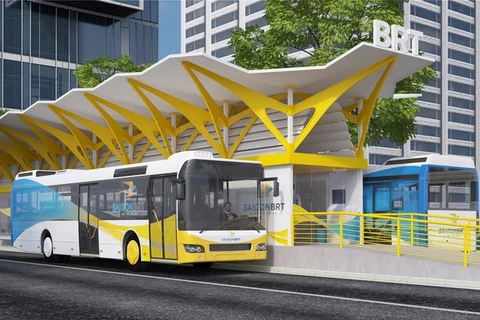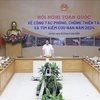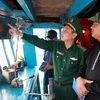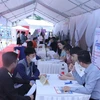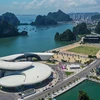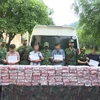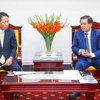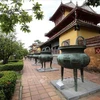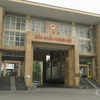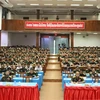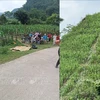HCM City (VNA) - HCM City has outlined plans for an overhaul of public transport, including metro lines, a new Bus Rapid Transit system and possible bus lanes as well as trams in an aim to reduce traffic congestion.
Nguyen Minh Hoa, Deputy Chairman of the HCM City Urban Development and Planning Association, said large buses had not been operating effectively on the city's small streets.
"In addition, there are no street lanes used only for buses and the number of motorbikes on street is large. As a result, buses form long queues on the streets in rush hour and cause traffic jams," he said.
The number of bus passengers has declined dramatically. It is estimated to reach nearly 367.7 million this year compared to 411 million last year, according to the city's Department of Transport.
Traffic congestion and buses not running on schedule are the major causes of the decline in the number of bus passengers.
Le Trung Tinh, former director of the city's Public Transport Management and Operation Centre, said the city should increase the number of bus ticket-sales agents from 30 to hundreds of agents. On some routes with fewer passengers, buses should be replaced with smaller vehicles.
The city should have preferential policies for buses, he said.
Phung Dang Hai, General Director of the HCM City Bus Co-operative Alliance, which has many buses on routes from the city centre to Thu Duc University Village, said buses with empty seats on certain days were usually a sign that students were taking exams.
"Because the buses are often late, students would rather drive a motorbike to the university on exam days to ensure they arrive on time," he said.
He said the city should develop a bus route system with clear lanes so buses can operate more effectively.
Le Hoang Minh, Deputy Director of the city's Department of Transport, said more than 50 percent of streets in the city were less than seven metres wide.
The department plans to conduct research on the viability of using some lanes for buses only, he said.
The city has improved bus service quality, including ensuring that buses are "friendly and safe" and offering electronic bus tickets.
In October, buses considered friendly and safe began operation on 10 routes. The model is expected to be implemented on all bus routes next year.
A programme to reduce traffic congestion, set up by the city's 10th Party Congress for the 2015-20 period, will focus on developing public transport and giving investment priority to public transport that can carry a large number of passengers, such as urban trains and a bus rapid transit (BRT) system.
Dr. Pham Xuan Mai of HCM City University of Technology said the city needed about 25 BRT routes with a total length of 687 km, and 957 buses for BRT routes by 2020, serving 20 -25 percent of demand.
The investment cost for the BRT is about 5-10 percent of the total cost of the metro. As the BRT construction period is short, the plan is highly feasible, according to Mai.
Hoang Nhu Cuong, deputy head of the city's Urban Railway Management Board, said the urban railway should be connected with other public transport like buses and vehicles.
Buses could collect passengers who would travel on metro lines, he said.
"The city needs to subsidise or exempt bus tickets for passengers who use buses to go to metro stations," he said.
By 2020, the city will put into operation the first phase of Metro Line No.1 and Metro Line No.2.
The two lines will transport a total of about 50 million of passengers a year, according to the city's Department of Transport.
Metro Line No. 1 connects Ben Thanh Market in District 1 with Suoi Tien Park in District 9.
Under the city's public transport development plan to 2020, the city is expected to have eight metro lines, three tramway or monorail routes, six BRT routes and five elevated roads with a total length of 70.7 km.
The city's bus routes and metro lines would serve 20-25 percent of travellers by 2020, and 35-45 percent to 20-25 percent of travellers, respectively, by 2030.
As of the end of last year, the city had 2,797 buses, down 74 against 2013. Seventy five percent of the buses have been in use since 2002.-VNA


